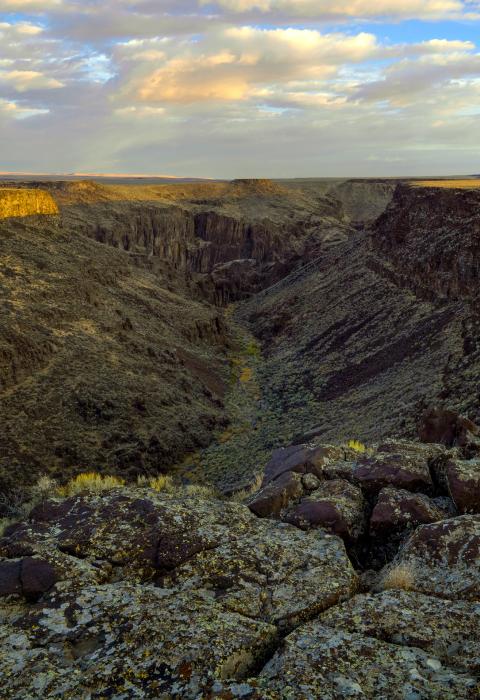Wickahoney Creek
Idaho
Wickahoney Creek is a tributary of Big Jacks Creek, and it is designated wild for 1.5 miles upstream of their confluence. It is characterized by dense riparian vegetation and tight meanders. Redband trout may be found in the creek, and mule deer are common in the area. Access to the area is difficult.
Designated Reach
March 30, 2009. Wickahoney Creek from its confluence with Big Jacks Creek to the upstream boundary of the Big Jacks Creek Wilderness.
Outstandingly Remarkable Values
Fish
Wickahoney Creek is outstandingly remarkable from a fisheries population and habitat standpoint. When considered in combination with Little Jack's, Cottonwood, and Duncan Creeks, the streams are among the 17% of desert streams in the Northern Basin and Range identified as aquatic-habitat strongholds for redband trout, a BLM sensitive species and a state of Idaho species of special concern.
Scenery
Canyons in this region are dominated by a mixture of high, vertical lines and forms of coarse-textured, red, brown, or blackish eroded cliffs, often glazed with yellow to light green micro-flora. Intertwined with the vertical features are steep diagonal lines that frame triangular forms associated with talus slopes. Slopes feature a mosaic of medium-textured yellow and subdued green sagebrush-bunchgrass communities and/or dark green juniper, as well as either medium-textured, reddish rhyolite rubble fields, or coarse-textured, blackish basalt rubble fields.
Wildlife
Wickahoney Creek is included in the area of Preliminary Priority Habitat for greater sage-grouse. Idaho BLM sensitive species also include bald eagles, yellow-billed cuckoos, prairie falcons, ferruginous hawks, several neotropical migratory bird species, several bat species, Columbia spotted frogs, and western toads. Cliffs also support spotted and Townsend's big-eared bats, both Idaho BLM sensitive species.

